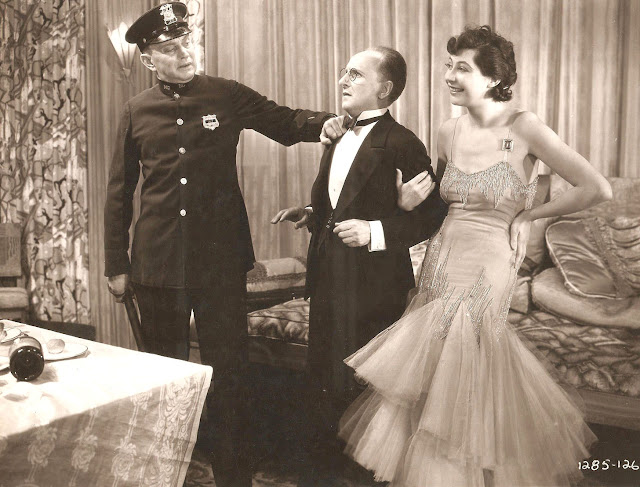Code Two (1953) Shows a Different Out West World


69 hummer minutes from Metro's B unit, still
out-putting in 1953, but soon to fold in deference to widened image and longer
runs. It would henceforth be less about
volume and more about laser turned on handful of big pictures aimed at far
fences. Studio chief Dore Schary put economies in motion from 1948 arrival,
result humble pleasures like Code Two, which served well those still tolerant
of black and white square screens. Code Two's first half is near-docu recount
of training for LA police recruits, noir flavor saved for latter portions where
modern-day cattle rustlers (!) add cop killing to their resumes. A young cast
was maybe hopeful of MGM stardom as bestowed in earlier day: Ralph Meeker (a hot
dog patrolman who learns modesty), Elaine Stewart (that Bad and Beautiful girl,
still beautiful but this time not bad), Robert Horton (greater success to come
w/TV), Jeff Richards, an unbilled Chuck Connors. MGM was good at gritty when
done on budgets (Code Two negative cost but $472K). Deuce of it was patronage
staying home to watch Dragnet, Racket Squad, and others of similar ilk on
free-vees. Result: Code Two lost money, not enough to cost meals, but
sufficient to scotch many more such B-joys from Leo.


To the Dragnet link, I'm guessing that hot
series was much of Code Two's reason for being. The feature turned ignition (start
date 9/15/52 on location at L.A.'s Police Academy) right when Dragnet was kicking off a second season. Variety was high
on Dragnet ("one of the smoothest, classiest telepix packages on the
air"), cool to chilly on eventual Code Two, which wasn't wrapped and
released till 3/53. The trade thought it "an obvious B," and
"strictly a filler for the less-demanding situations," this stating
the obvious as Metro had no designs for it beyond this. We can see the
appraisal as harsh for reason that press/public took brisk and expert
melodramas very much for granted then, there were so many after all, and they'd
not see this for sunshine trip-back to L.A.
before smog-dappled fall. Crooks were about, some deadly, but so were shiny
motorcycles with black-clad officers, barbecue pits on days off, and overall
reassure that L.A.'s force has the spread-out town reasonably under control.
Code Two would make a fun and eye-opener double bill with L.A. Confidential.



Cops cooperated, as this was
positive depict after Dragnet model. No corruption or badges on the take as was
endemic to police thrillers of a same season. Code Two would fit comfortably
behind other Metros with higher hope: Small Town Girl, Battle Circus, The Girl
Who Had Everything. It was designed as a second feature like hundreds of others
back to the thirties when combo policy was embedded. Code Two served as
backdrop to loaded vaudeville programs (there still were those in the 50's), as
in Miami where it supported "recording click" Sunny Gale, the
"thrush" and "attractive lass" who had scored a Hit Parade
berth with Wheel Of Fortune, though Kay Starr made a bigger success
covering the tune. There were also roller skaters, a Cuban band, magic that was
tough to register on a cavernous stage, plus a comic plying
"waggery," even if Variety thought "much of his routine ...
stale." If vaudeville was dead, these folks didn't know it. Eternal feud between distribution and exhibition got
April '53 airing with Code Two as pawn, MGM dropping ad support to the United
Artists theatre circuit in L.A. because latter wasn't kicking in their share of expenses. How
much you'd invest on promotion could absolutely determine end-game profit.
Spend too much tooting horns and drown in the red pool, no matter your crowds
surging in. For this instance, Leo simply cut off the spigot and left UA to
ad-buy for Small Town Girl and Code Two with its own dime, and as the circuit
had only $2,500 for a weekly ad budget, this was lowering boom on their operating week. When Metro and other majors spanked, they spanked
hard.




















































